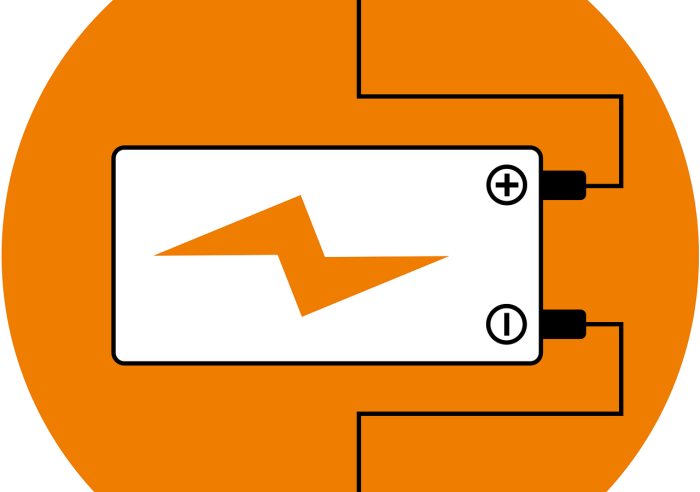
Image: Ricinator
The third stage of the ACT’s Next Generation Energy Storage grants program has been provided more than $3 million in funding for battery system subsidies.
Through all stages of the program, up to 36 megawatts of distributed solar battery storage will be installed in up to 5,000 ACT homes and businesses by 2020.
Eligible households and businesses installing batteries connected to a new or existing solar power system receive up to $825 in subsidy for each kilowatt of sustained peak output, knocking thousands off the up-front cost of installing an average-size battery system.
Among the eight companies to deliver the third stage of the program are SolarGain and SolarHub.
1MW of energy storage has been installed under the program so far under previous stages, but ACT Minister for Climate Change and Sustainability Shane Rattenbury expects that figure to rapidly increase during 2018.
“The battery storage roll-out program is building on Canberra’s reputation as a globally-recognised hub for the renewable energy industry,” said Minister Rattenbury. “Detailed data is being collected from all batteries installed under the program which will inform research and industry development.”
Mr. Rattenbury stated solar + storage households are playing a role in reducing the risks associated with summer peak electricity demand while the ACT transitions to 100% renewables by 2020.
“The batteries are also contributing to the world’s largest residential virtual power plant being trialed by Reposit Power and EvoEnergy (formerly ActewAGL Distribution), which allows battery owners to sell their energy to the grid to help support the electricity network.”
Canberra’s Virtual Battery
The day before Tesla’s big battery in South Australia was activated in December last year, The virtual battery
Batteries and hybrid inverters compatible with Reposit Power at the time of writing:
- Opal Storage
- SolaX Power Station
- LG Chem Resu, Resu 6.4 and RESU10H/7H
- GCL e-KwBe
- Samsung All In One ESS
- Pylontech Extra2000
- Fronius Solar Battery
- Tesla Powerwall (original – Powerwall 2 not compatible)
- SMA Sunny Boy Storage
- Sungrow SH5K/SH5K+
- SolarEdge SE5000-6000 AUS/RWS
- SolaX SK-TL 5000E
- Fronius Symo Hybrid 5.0-3-2
You can learn more about some of the above products, along with price estimates, in SolarQuotes’ battery storage and hybrid inverter comparison tables.
Further information on the ACT’s Next Generation Battery Storage program can be viewed here.
While battery system uptake in the ACT is yet to really take off, small-scale solar power in Canberra has been chugging along nicely. Close to 19,000 PV systems had been installed in the ACT by the end of November last year according to Australia’s Clean Energy Regulator.

 RSS - Posts
RSS - Posts



As the Solar Quotes comparison tables for the hybrid inverters and the battery storage, are accessible only via javascript, which is apparently the vehicle for the Spectre security threat, against which, no effective protection is regarded as being available for at least six months, can those tables please be made available as pure HTML and/or PDF files?
Thank you in anticipation.
Hello Bret
While I personally think Java is a type of drink, Finn, who is pretty good at this stuff, assures me the risk is low.
I think it is not made explicitly clear in the above article, so, I have deduced it, and, ask whether I am correct in my perception – in the part “Batteries and hybrid inverters compatible with Reposit Power at the time of writing:”; in the list, are only DC-coupled batteries compatible?
Is a comparison of advantages and disadvantages, of AC-coupled battery systems and DC-coupled battery systems, relative to each other, for battery systems that are currently available, available?
We took advantage of first phase of batteries and a Panasonic was installed by solar Web on behalf of actewàgl. It’s reduced our electricity costs really well. Our initial pv was installed by solarweb but we haven’t been contacted to join. ?
It’s great that the government is trying to give incentives to install battery. But all too often installers will increase their profit margins to absorb the grant. I got a quote for a PW2 at $10k with grant. In other states people are getting quotes for $10k without grant.
Why not list all eight companies involved in the project?
Would it not be better to list all companies? Or none at all allowing the consumer to research and make their own enquiries?
John, all eight companies are mentioned in the announcement that was linked to in the article. Here’s that link again:
http://www.cmd.act.gov.au/open_government/inform/act_government_media_releases/rattenbury/2018/over-$3-million-to-support-battery-storage-roll-out